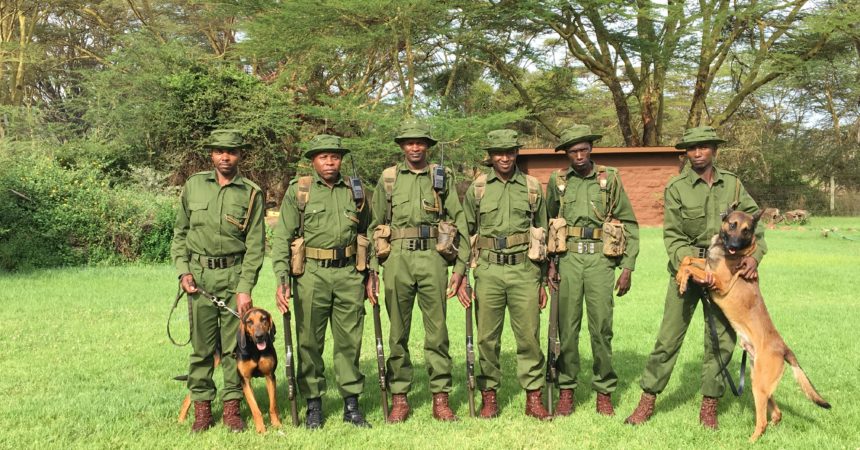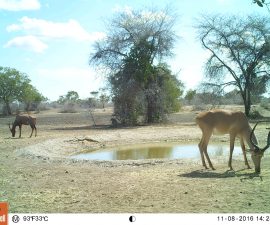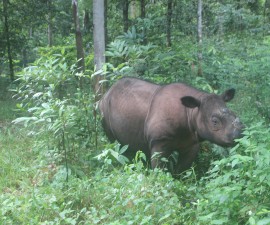In early 2016, San Diego Zoo Global (SDZG) provided support to Northern Rangelands Trust (NRT) to enhance both their human and canine capabilities in their anti-poaching efforts across Kenya’s northern landscape.
Tracker dogs are one of the most effective tools for wildlife security, often deterring poachers from even entering an area. NRT’s canine unit is currently split between Sera Rhino Conservancy and Lewa Conservancy. The team based at Lewa consists of three bloodhounds named Tipa, Sasha, and Ruby and an energetic Belgian Malinois named Zack.
According to Edward Nderitu, head of armed security at Lewa, over 90 percent of the Lewa/NRT canine unit’s operations are related to stock thefts or robberies within the surrounding communities, with a very small proportion of their operations directly related to conservation. The canine unit has had multiple successes over the years. Ephriai Bocha, a member of the canine unit, recalls a week-long search for a missing mountaineer on Mount Kenya. Led by the bloodhound Tipa, the team found the missing mountaineer safe a week later. Through supporting the communities with incidences of crime, helping to track down perpetrators, the communities are encouraged to assist both Lewa and NRT with human intelligence and consequently with the protection of wildlife.
All the dogs are certified by the Kenya Police Service, so that if a perpetrator is caught through the use of the canine unit, the evidence can be used in a trial. Recently, three judges and two magistrates attended an exposure tour on Lewa to learn how the dogs work and track. The work of the judiciary is every bit as important as the canine units work on the ground, and it is great to see members of the judicial system learning about how the dogs are deployed in the field.
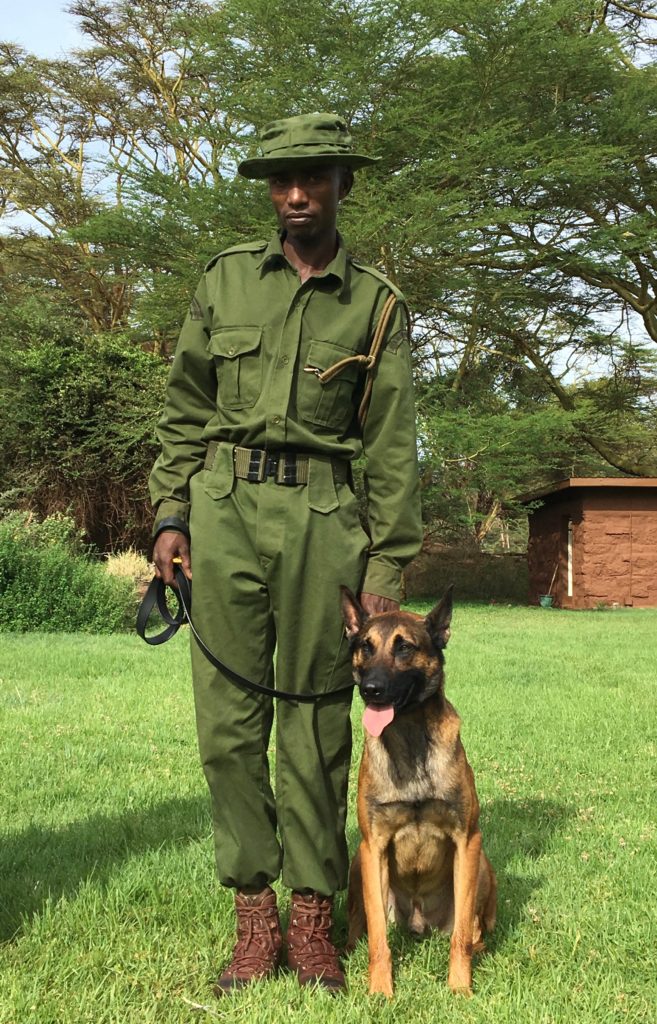
Zack, the lively Belgian Malinois, tracks extremely well in the northern territories where temperatures can reach up to 100 degrees Fahrenheit (38 degrees Celsius). Although he cannot track old scent as well as the bloodhounds, he is much faster and able to travel farther distances in the heat. In contrast, the bloodhounds track better in colder climates and the females work better within community areas, not getting distracted by the scent of other dogs. After a very successful career, Tipa will be retiring soon, and the unit is looking at a bloodhound-Doberman mix from South Africa to replace him.
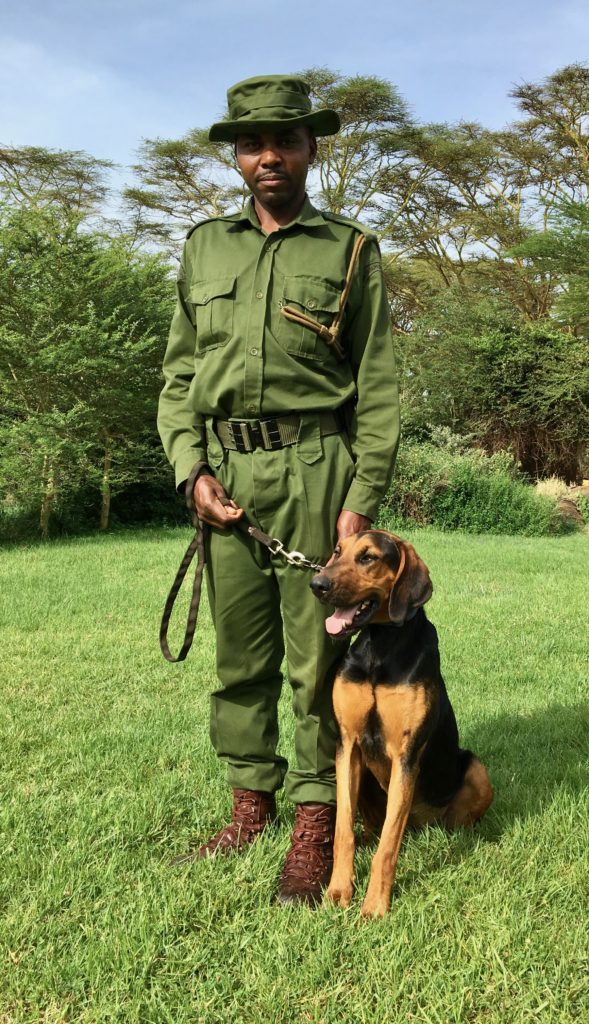
It is a credit to the work of this canine unit that they are called by the Kenya Police Service in the event of crime. As Nderitu states “dogs cannot be compromised, and the canine unit is becoming famous around our communities and up in the north!” He describes how, in the past, the security teams were virtually tracking—but since the canine unit came into existence, their successes have multiplied. Indeed, the zero incidences of poaching across the Lewa landscape over the past five years can partially be credited to this brilliant team. San Diego Zoo Global is incredibly proud to support this unit, and is pleased to see the successes their hard work is reaping.
Isabelle Parsons is an SDZG consultant to Global Partnerships living in Laikipia County, Kenya. Read her previous blog, Water for Rhinos.

